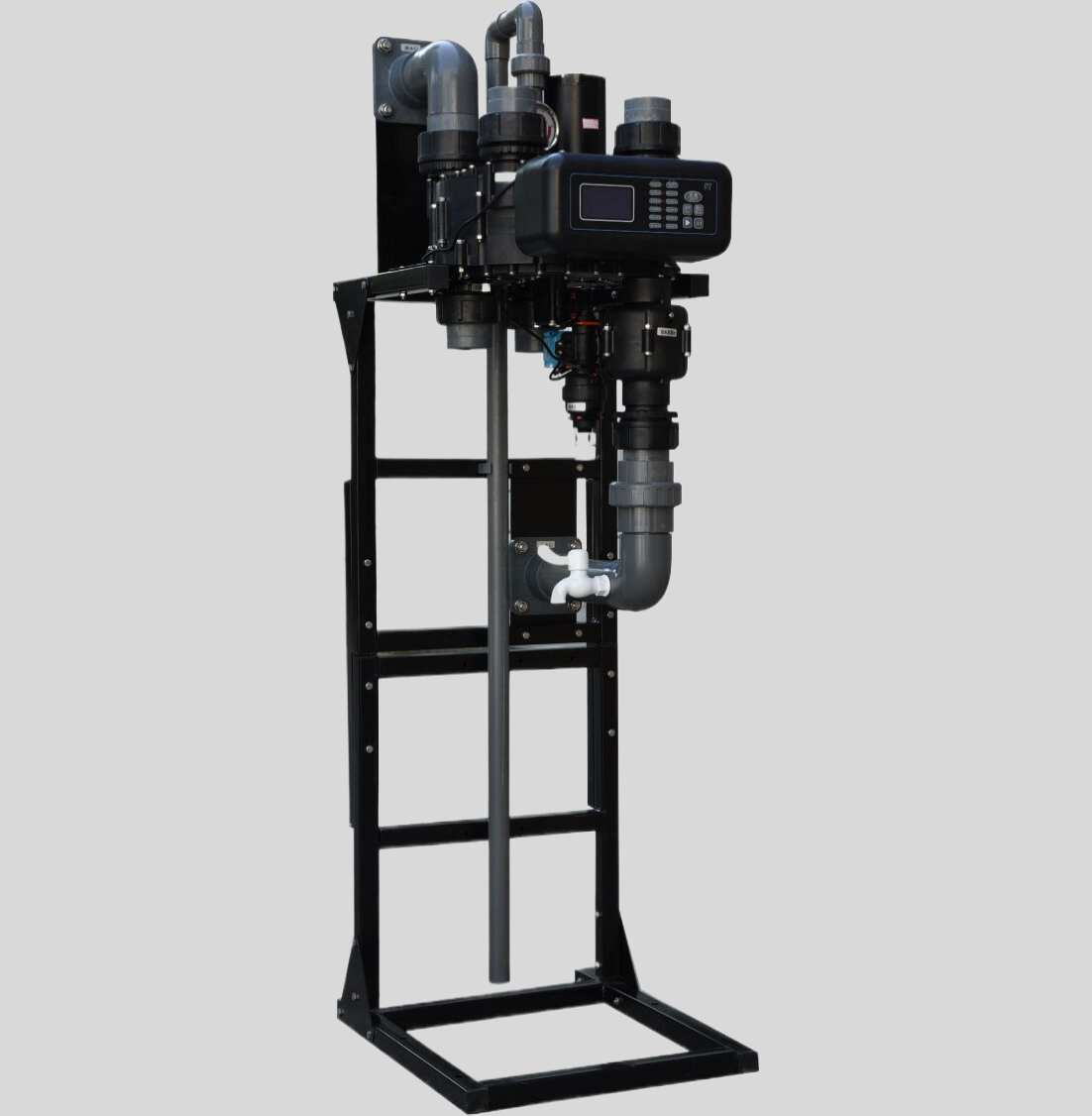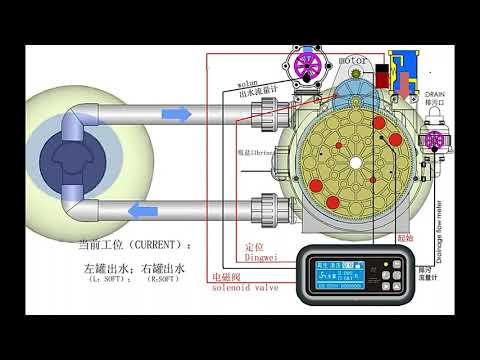Table of Contents
Understanding the Functionality of Filter Pressure Regulating Valves
Filter pressure regulating valves are integral components in various industrial and domestic applications. They play a crucial role in controlling the pressure of fluids in systems such as water supply networks, heating systems, and industrial process control applications. Understanding the functionality of these valves is essential for anyone involved in their operation, maintenance, or design.
A filter pressure regulating valve, as the name suggests, performs two primary functions. Firstly, it filters the fluid passing through it, removing any particulate matter or debris that could potentially damage the system or degrade its performance. Secondly, it regulates the pressure of the fluid to ensure it remains within a specified range. This dual functionality makes these valves incredibly versatile and valuable in a wide range of applications.
The operation of a filter pressure regulating valve is relatively straightforward. The fluid enters the valve and passes through a filter element, which traps any particulate matter or debris. This filtered fluid then flows into a pressure regulating section of the valve. Here, a spring-loaded diaphragm or piston responds to changes in the fluid pressure. If the pressure exceeds a predetermined limit, the diaphragm or piston moves to reduce the fluid flow, thereby lowering the pressure. Conversely, if the pressure falls below the set limit, the diaphragm or piston moves in the opposite direction to increase the fluid flow, thereby raising the pressure.
The ability of a filter pressure regulating valve to maintain a constant pressure is particularly important in applications where pressure fluctuations can have detrimental effects. For instance, in a water supply network, sudden changes in pressure can cause water hammer, a phenomenon that can damage pipes and fittings. By maintaining a steady pressure, a filter pressure regulating valve can help prevent such issues.
Moreover, the filtering function of these valves is equally crucial. In many systems, particulate matter or debris in the fluid can cause significant damage. For example, in a hydraulic system, particles in the hydraulic fluid can cause wear and tear on the system’s components, leading to premature failure. By filtering out these particles, a filter pressure regulating valve can help extend the lifespan of the system and reduce maintenance costs.
However, it’s important to note that filter pressure regulating valves require regular maintenance to ensure they continue to function effectively. The filter element, in particular, can become clogged over time, reducing the valve’s effectiveness and potentially causing a drop in system performance. Regular inspection and replacement of the filter element are therefore essential.
| Model | Category | Water Capacity m3/h | LCD | LED | ICON | DIODE |
| CV-2 | Automatic Drain Valve | 0.5 |
In conclusion, filter pressure regulating valves are vital components in many fluid systems, providing both filtration and pressure regulation. Their operation is relatively simple, but their impact on system performance and longevity is significant. By understanding the functionality of these valves, operators and maintenance personnel can ensure they are used effectively and maintained properly, thereby maximizing system performance and minimizing downtime. Whether in an industrial process control application or a domestic water supply network, the importance of filter pressure regulating valves cannot be overstated.
Maintenance and Troubleshooting Tips for Filter Pressure Regulating Valves
Filter pressure regulating valves are essential components in various industrial and domestic applications. They play a crucial role in controlling the pressure of fluids in systems such as water supply networks, heating systems, and industrial process control. Despite their importance, these valves can sometimes fail or malfunction, leading to operational inefficiencies or even system breakdowns. Therefore, regular maintenance and troubleshooting are necessary to ensure their optimal performance. This article provides some practical tips on how to maintain and troubleshoot filter pressure regulating valves.

Firstly, regular inspection is a fundamental aspect of maintaining filter pressure regulating valves. It is advisable to check the valve’s physical condition periodically, looking out for signs of wear and tear, corrosion, or leakage. Any abnormalities should be addressed promptly to prevent further damage. Additionally, the valve’s performance should be monitored regularly. This involves checking the pressure levels and ensuring they are within the recommended range. If the pressure is too high or too low, it could indicate a problem with the valve.
Secondly, cleaning is another essential maintenance practice. Over time, debris and other foreign materials can accumulate in the valve, affecting its functionality. Therefore, it is necessary to clean the valve regularly to remove any accumulated debris. This can be done by disassembling the valve and cleaning its components using a suitable cleaning agent. However, it is important to follow the manufacturer’s instructions when disassembling and cleaning the valve to avoid causing damage.
Thirdly, lubrication is vital for the smooth operation of filter pressure regulating valves. The moving parts of the valve, such as the stem and the diaphragm, need to be lubricated regularly to reduce friction and prevent wear and tear. The type of lubricant to use depends on the valve’s material and the operating conditions. It is advisable to use a lubricant recommended by the valve’s manufacturer.
When it comes to troubleshooting filter pressure regulating valves, there are several common issues to look out for. One of these is a valve that does not open or close properly. This could be due to a problem with the actuator, the component that controls the opening and closing of the valve. In such a case, the actuator may need to be repaired or replaced.

Another common issue is fluctuating pressure. If the pressure in the system is not stable, it could indicate a problem with the valve’s pressure regulating mechanism. This could be due to a worn-out diaphragm or a faulty pressure spring. These components should be checked and replaced if necessary.
Lastly, if the valve is leaking, it could be due to a damaged seal or gasket. These components should be inspected and replaced if they are found to be faulty. It is also important to ensure that the valve is properly installed and that all connections are tight to prevent leaks.
| Model | Central tube | Drain | Brine tank connector | Base | Power supply parameters | Maximum power | Pressure parameters | Operating temperature |
| 5600 | 0.8125″/1.050″ O.D. | 1/2″NPTF | 1600-3/8″ | 2-1/2″-8NPSM | 24v,110v,220v-50Hz,60Hz | 3W | 2.1MPa | 1℃-43℃ |
| 0.14-0.84MPa | ||||||||
| 5600SXT | 0.8125″/1.050″ O.D. | 1/2″NPTF | 1600-3/8″ | 2-1/2″-8NPSM | 24v,110v,220v-50Hz,60Hz | 8.4W | 2.1MPa | 1℃-43℃ |
| 0.14-0.84MPa | ||||||||
| 2510 | 1.05″ (1″)O.D. | 1/2″O.D. | 1600-3/8″ | 2-1/2″-8NPSM | 24v,110v,220v-50Hz,60Hz | 72W | 2.1MPa | 1℃-43℃ |
| 1650-3/8″ | 0.14-0.84MPa | |||||||
| 2700 | 1.05″ O.D. | 3/4″NPTF | 3/8″ & 1/2″ | 2-1/2″-8NPSM | 24V,110V,220V-50Hz,60Hz | 74W | 2.1MPa | 1℃-43℃ |
| 0.14-0.84MPa | ||||||||
| 2850 | 1.9″(1.5″)O.D. | 1″NPTM | 3/8″&1/2″ | 4″-8UN | 24v,110v,220v-50Hz,60Hz | 72W | 2.1MPa | 1℃-43℃ |
| 0.14-0.84MPa | ||||||||
| 2900 | 1.9″(1.5″)O.D. | 3/4″NPTM | 3/8″&1/2″ | 4″-8UN | 24v,110v,220v-50Hz,60Hz | 143W | 2.1MPa | 1℃-43℃ |
| 0.14-0.84MPa | ||||||||
| 3150 | 2.375″(2″) O.D. | 2″NPTF | 1″NPTM | 4″-8UN | 24v,110v,220v-50Hz,60Hz | 87W | 2.1MPa | 1℃-43℃ |
| 0.14-0.84MPa | ||||||||
| 3900 | 3.5″(3″) O.D. | 2″NPTF | 1″NPTM | 6″-8UN | 24v,110v,220v-50Hz,60Hz | 171W | 2.1MPa | 1℃-43℃ |
| 0.14-0.84MPa | ||||||||
| 9000 | 1.05″ O.D. | 1/2″NPT | 1600-3/8″ | 2-1/2″-8NPSM | 24v,110v,220v-50Hz,60Hz | 8.9W | 2.1MPa | 1℃-43℃ |
| 0.14-0.84MPa | ||||||||
| 9100 | 1.05″ O.D. | 1/2″NPT | 1600-3/8″ | 2-1/2″-8NPSM | 24v,110v,220v-50Hz,60Hz | 8.9W | 2.1MPa | 1℃-43℃ |
| 0.14-0.84MPa | ||||||||
| 9500 | 1.9″(1.5″) O.D. | 1″NPTF | 3/8″& 1/2″ | 4″-8UN | 24v,110v,220v-50Hz,60Hz | 8.9W | 2.1MPa | 1℃-43℃ |
| 0.14-0.84MPa |
In conclusion, maintaining and troubleshooting filter pressure regulating valves is crucial for their optimal performance. Regular inspection, cleaning, and lubrication can help prevent many common problems. However, if issues arise, it is important to identify and address them promptly to prevent further damage. By following these tips, you can ensure the longevity and efficiency of your filter pressure regulating valves.






